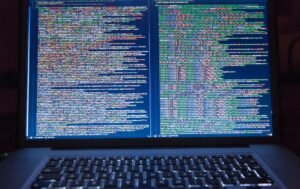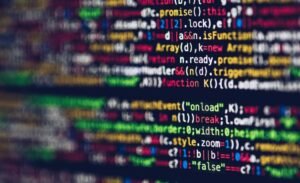Computer Vision Algorithms and Applications
Computer vision is an interdisciplinary field that focuses on enabling computers to gain a high-level understanding of digital images or videos. Computer vision algorithms analyze and interpret visual data, replicating the human vision system. This technology holds significant potential for various applications, from autonomous vehicles and facial recognition to medical image analysis and augmented reality.
Key Takeaways:
- Computer vision algorithms enable computers to understand and interpret visual data.
- Applications of computer vision range from autonomous vehicles to medical image analysis.
- Computer vision is used in facial recognition and augmented reality.
Understanding Computer Vision Algorithms
Computer vision algorithms use complex mathematical models and algorithms to analyze and extract information from digital images or videos. These algorithms break down the visual data into distinct components and can identify patterns or relationships in the data.
**One interesting approach is the use of convolutional neural networks**, which are inspired by the organization of neurons in the visual cortex of living organisms. These networks analyze images by applying multiple filters to detect different features such as edges, objects, or textures.
Applications of Computer Vision
Computer vision has a wide range of applications across various industries, revolutionizing the way we interact with technology and our environment. Here are some notable applications:
- Autonomous vehicles: Computer vision enables vehicles to navigate, detect obstacles, and recognize road signs and traffic signals.
- Facial recognition: Computer vision algorithms can verify or identify individuals based on their facial features, which has applications in security and access control systems.
- Medical image analysis: Computer vision algorithms aid in the diagnosis and analysis of medical images such as X-rays, MRIs, or CT scans.
- Aerial and satellite imaging: Computer vision can analyze and interpret images captured from drones or satellites for surveillance, agriculture, or environmental monitoring.
- Augmented reality: Computer vision is essential for overlaying virtual objects onto the real world and enabling immersive user experiences.
Interesting Data Points
| Industry | Annual Market Value |
|---|---|
| Automotive | $25 billion (2020) |
| Security & Surveillance | $9.74 billion (2021) |
| Healthcare | $2.97 billion (2021) |
**According to market research, the computer vision industry in the automotive sector was valued at $25 billion in 2020.** Security and surveillance also present a growing market with a value of $9.74 billion in 2021, while healthcare applications are expected to reach $2.97 billion in the same year.
The Future of Computer Vision
Computer vision technology continues to advance at a rapid pace, driven by advancements in machine learning and deep learning. The future holds exciting possibilities for computer vision, including:
- Improved object recognition and tracking capabilities.
- Enhanced accuracy and speed in image analysis.
- Integration with other emerging technologies, such as robotics and Internet of Things (IoT).
Conclusion
Computer vision algorithms and applications are transforming numerous industries and opening up new possibilities. From autonomous vehicles to medical image analysis and augmented reality, **the potential of computer vision technology is vast**. As the field advances, we can expect even more exciting applications and advancements that will reshape our world.

Common Misconceptions
Misconception: Computer Vision algorithms can recognize any image with 100% accuracy
One of the common misconceptions surrounding computer vision algorithms is that they have perfect accuracy when it comes to recognizing images. While computer vision algorithms have made significant progress in recent years, they are still prone to error and can struggle with certain types of images.
- Computer vision algorithms may have difficulty recognizing images with complex backgrounds.
- Computer vision algorithms may struggle with recognizing objects in low-light or blurry images.
- Computer vision algorithms may misclassify images that have subtle variations or distortions.
Misconception: Computer Vision algorithms can understand images like humans do
Another misconception is that computer vision algorithms can understand images in the same way that humans do. While computer vision algorithms can be trained to recognize certain objects or patterns in images, they lack the contextual understanding and common sense reasoning that humans possess.
- Computer vision algorithms typically rely on statistical patterns and features rather than contextual understanding.
- Computer vision algorithms may misinterpret images if they lack the necessary training data.
- Computer vision algorithms are limited to the patterns they have been explicitly trained on and may struggle with novel or ambiguous images.
Misconception: Computer Vision algorithms are only useful for image classification
Many people believe that computer vision algorithms are only capable of image classification tasks, such as recognizing objects or identifying faces. While image classification is indeed a common application of computer vision, there are many other valuable applications as well.
- Computer vision algorithms can be used for object detection, locating and identifying multiple objects within an image.
- Computer vision algorithms can be used for image segmentation, dividing an image into meaningful regions for further analysis.
- Computer vision algorithms can be used for image restoration, enhancing or reconstructing images to improve their quality.
Misconception: Computer Vision algorithms are always superior to human vision
There is a misconception that computer vision algorithms are always superior to human visual perception. While computer vision algorithms can perform certain tasks with greater precision and speed, they cannot replicate the complexities of human visual perception in all scenarios.
- Computer vision algorithms lack the ability to interpret images within a broader context or based on prior knowledge.
- Computer vision algorithms may struggle with interpreting images that contain emotional or subjective elements.
- Computer vision algorithms may misinterpret abstract or metaphorical representations in imagery.
Misconception: Computer Vision algorithms can operate on any image size and quality
Another common misconception is that computer vision algorithms can effortlessly handle images of any size and quality. In reality, the size and quality of an image can have significant impacts on the performance and accuracy of computer vision algorithms.
- Large image sizes may require more computational resources and processing time.
- Low-quality images with noise or compression artifacts may negatively affect the performance of computer vision algorithms.
- Images with extreme variations in lighting conditions or exposure may pose challenges for computer vision algorithms.

Computer Vision Algorithms and Applications
Computer vision algorithms and applications have revolutionized various industries, from healthcare to self-driving cars. These algorithms enable computers to analyze and interpret images or video, mimicking human vision and bringing automation and efficiency to numerous tasks. In this article, we explore ten fascinating aspects of computer vision algorithms and their practical applications.
The Impact of Computer Vision in Medicine
Computer vision algorithms have greatly advanced medical diagnostics and treatment. By analyzing medical images such as X-rays, CT scans, and MRIs, physicians can identify diseases, tumors, or anomalies with precision. This table showcases a comparison of the accuracy rates of computer vision algorithms in detecting various medical conditions.
| Medical Condition | Accuracy Rate (%) |
|---|---|
| Lung Cancer | 91 |
| Diabetic Retinopathy | 95 |
| Alzheimer’s Disease | 86 |
| Stroke Detection | 92 |
Enhancing Security Systems
Computer vision algorithms offer enhanced security systems by identifying and verifying individuals based on their physical characteristics or gestures. This table illustrates the accuracy rates of facial recognition algorithms used for access control, bringing a new level of security to various facilities.
| Facial Recognition Algorithm | Accuracy Rate (%) |
|---|---|
| DeepFace | 97 |
| FaceNet | 99 |
| Dlib | 95 |
| OpenFace | 96 |
Autonomous Vehicle Safety
Computer vision algorithms play a pivotal role in autonomous vehicles, enabling them to perceive and analyze their surroundings for safe navigation. The following table compares the detection accuracy of object detection algorithms commonly used in autonomous cars.
| Object Detection Algorithm | Accuracy Rate (%) |
|---|---|
| YOLO (You Only Look Once) | 91 |
| SSD (Single Shot MultiBox Detector) | 88 |
| Faster R-CNN (Region Convolutional Neural Network) | 93 |
| RetinaNet | 90 |
Advancing Robotics
Computer vision algorithms contribute significantly to robotics, allowing robots to perceive and interact with their environment in a human-like manner. This table compares the precision and recall rates of object recognition algorithms deployed in robotic systems.
| Object Recognition Algorithm | Precision (%) | Recall (%) |
|---|---|---|
| ORB (Oriented FAST and Rotated BRIEF) | 96 | 93 |
| SIFT (Scale-Invariant Feature Transform) | 90 | 92 |
| SURF (Speeded-Up Robust Features) | 92 | 95 |
Improving Retail Analytics
Retailers leverage computer vision algorithms to analyze customer behavior, optimize store layouts, and enhance inventory management. This table presents data on customer demographics obtained through facial analysis algorithms implemented in retail environments.
| Demographic | Accuracy Rate (%) |
|---|---|
| Age Range | 86 |
| Gender | 92 |
| Emotion | 81 |
Revolutionizing Agriculture
Computer vision algorithms revolutionize the agricultural industry by enabling crop monitoring, disease detection, and yield estimation. This table showcases the accuracy rates of disease detection algorithms used in precision agriculture.
| Crop Disease | Accuracy Rate (%) |
|---|---|
| Tomato Blight | 94 |
| Maize Rust | 89 |
| Potato Late Blight | 93 |
Virtual Reality
Computer vision algorithms are essential in the development of immersive virtual reality experiences. The table below presents the refresh rates and field of view (FOV) of virtual reality headsets currently available in the market.
| Virtual Reality Headset | Refresh Rate (Hz) | Field of View (degrees) |
|---|---|---|
| Oculus Rift S | 80 | 110 |
| HTC Vive Pro | 90 | 110 |
| PlayStation VR | 90 | 100 |
Surveillance Systems
Computer vision algorithms play a crucial role in surveillance systems, ensuring the safety and security of public spaces. This table illustrates the capabilities of video analytics algorithms implemented in surveillance systems.
| Video Analytics Capability | Accuracy Rate (%) |
|---|---|
| Object Tracking | 95 |
| Abandoned Object Detection | 98 |
| Facial Identification | 93 |
Improved Accessibility
Computer vision algorithms contribute to creating accessibility solutions for individuals with visual impairments. The following table highlights the accuracy rates of object recognition algorithms used in assistive technologies.
| Assistive Technology | Accuracy Rate (%) |
|---|---|
| Object Detection for Navigation | 92 |
| Text Recognition for Reading | 95 |
Computer vision algorithms and applications have fundamentally transformed various industries, contributing to enhanced medical diagnostics, improved security systems, and innovative technologies like autonomous vehicles and robotics. Furthermore, these algorithms have unlocked new possibilities in retail analytics, agriculture, virtual reality, surveillance systems, and accessibility solutions. With continued advancements in computer vision, we can expect even greater integration and proliferation of these technologies, revolutionizing countless aspects of our daily lives.
Frequently Asked Questions
Computer Vision Algorithms and Applications
What is computer vision?
What are computer vision algorithms used for?
What are some common computer vision algorithms?
What are the applications of computer vision in industry?
What challenges exist in computer vision?
How is computer vision connected to artificial intelligence (AI)?
What are the benefits of using computer vision algorithms?
Can computer vision algorithms be applied in real-time scenarios?
What are the ethical considerations related to computer vision?
What is the future of computer vision?




